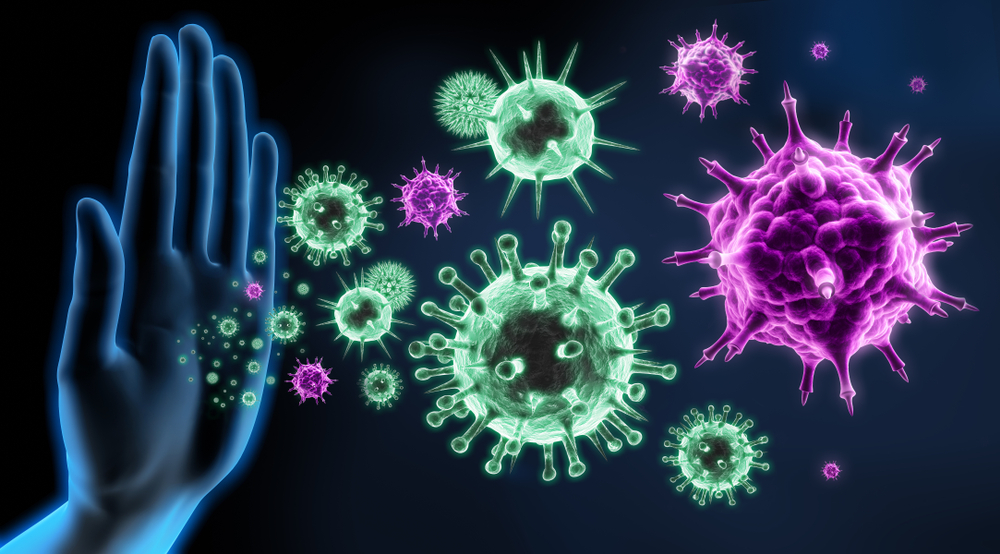
How Your Immune System Works
Your immune system is essential in fighting off infections caused by bacteria, viruses and other parasites. Without your immune system, you could die from something as simple as the common cold or a minor cut. The immune system is made up of a complex network of cells, organs, proteins and tissues, all tasked with protecting the body from external and internal threats.
Two Major Immune Systems
Everyone has two major kinds of immune system: innate and adaptive. Your innate immune system is what you inherit from your parents, and it is active at birth. The innate immune system uses inherited information to identify pathogens and attack them.
The adaptive immune system uses antibodies to help identify new kinds of invaders and fight them off. Once a pathogen is identified, your immune system will alert white blood cells to attack and remove them. Adaptive immune system provides the bulk of our immunities for most people.
Both of these immune systems help build immunity against certain viruses and bacteria. Once a germ is tagged as a foreign invader, your immune system can more quickly neutralize it.
Initial Encounter with a Pathogen
Our bodies are constantly encountering new viruses and bacteria, but it is quite rare for an infectious illness to occur. Most microorganisms that get past the skin, lining of our lungs or digestive system are met by the innate immune system which uses phagocytes, types of cells that engulf the intruders. Phagocytes bond to proteins on the surfaces of bacteria and viruses.
This, in turn, initiates an immune response that involves the release of cytokines and chemokines that cause inflammation. Inflammation helps stop infection by recruiting effector molecules and initiating a clotting response that helps remove pathogens from the body. Inflammation, therefore, kills microbes, sets up a physical barrier and promotes healing of damaged tissue.
Phagocytes release many chemicals that help kill the germ it has engulfed. These include hydrogen peroxide, superoxide anion and nitric oxide which are toxic to bacteria. This is a major component of the innate immune system and a line of defense that is difficult for most microorganisms to overcome.
The few pathogens that are able to breach the innate immune system may utilize some select strategies.
- They may have a thick polysaccharide outer layer that does not have any phagocyte receptors.
- They may inhibit fusion with lysosomes which phagocytes attract to destroy invaders.
- They may overwhelm the immune system with sheer numbers of microbes.
Adaptive Immune System
The adaptive immune system refers to differentiation between self and non-self, and is composed of B cells and T cells. These are lymphocytes that develop from bone marrow stem cells. Each type of lymphocyte follows its own maturation pathway. Both T cells and B cells, which are white blood cells, live longer than phagocytes.
B cells originate in bone marrow, but they move into the lymphatic system. In the lymphatic system, the B cell meets an antigen, an identifying marker for a pathogen, and this initiates the B cell’s maturation process. B cells produce antibodies that lock onto pathogens, making them a target for other immune cells.
T cells come in two varieties: helper T cells and killer T cells. Helper T cells assist B cells in making antibodies, while killer T cells help destroy foreign and antibody-bound microbes. T cells also alert the rest of the immune system to ramp up alert response.
Perhaps the most important feature of the adaptive immune system is its ability to remember previous infections. Although it may take days to respond to an initial infection, it only takes a few hours to respond to subsequent infections. This is because B and T cells that adapted to the original illness remain in the body for years.
Why Vaccines Work
In order to understand how and why vaccines work, you must know that we have thousands of antibodies in our bodies, each one specifically keyed to a unique pathogen. Upon exposure to a new virus or bacteria, our adaptive immune system develops a new antibody that remains in our bodies for months or years.
After this antibody is created, you are much more protected from re-infection. Unlike an initial infection which may take days to fight—and may include a bout of illness—any following infections may only take a few hours, and you may avoid getting sick.
Vaccines help protect you from becoming ill by mimicking that initial infection. The inoculation may include the following to initiate antibody production:
- Live attenuated pathogen—some vaccines use a weakened form of the virus or bacteria to initiate an immune response. This live but attenuated form is too weak to cause the illness (at least in healthy adults and children), but they are sufficient to produce antibodies.
- Inactivated pathogen—germs that have been killed can still produce an immune response, although it may not be very strong. These kinds of vaccines often require multiple shots to produce a full-strength immune response.
- Toxins—some vaccines only include the toxins that the target germ makes. These toxins are weakened so that the patient doesn’t become ill.
- Subunits—in certain cases, it is only necessary to include a part of the virus or bacteria instead of the entire germ. These vaccines only contain the antigens that help produce antibodies so there may be fewer side effects than other kinds of vaccines.
In addition to protecting the inoculated from infection and illness, vaccines also offer some degree of protection to those who have not received the vaccine. Consider a family member with a weakened immune system; if all of the other household members get vaccinated, then they are less likely to become infected and transmit the illness to others.
This principle also applies to the wider population. If enough people become vaccinated, then the pathogen can’t find enough hosts to survive. Eventually, if 70 to 80 percent of a population becomes immune to an illness, that pathogen may disappear entirely. That is exactly what happened to smallpox.
Article written by: Dr. Robert Moghim – CEO/Founder Colorado Pain Care
M.D. Disclaimer: The views expressed in this article are the personal views of Robert Moghim, M.D. and do not necessarily represent and are not intended to represent the views of the company or its employees. The information contained in this article does not constitute medical advice, nor does reading or accessing this information create a patient-provider relationship. Comments that you post will be shared with all visitors to this page. The comment feature is not governed by HIPAA and you should not post any of your private health information.



